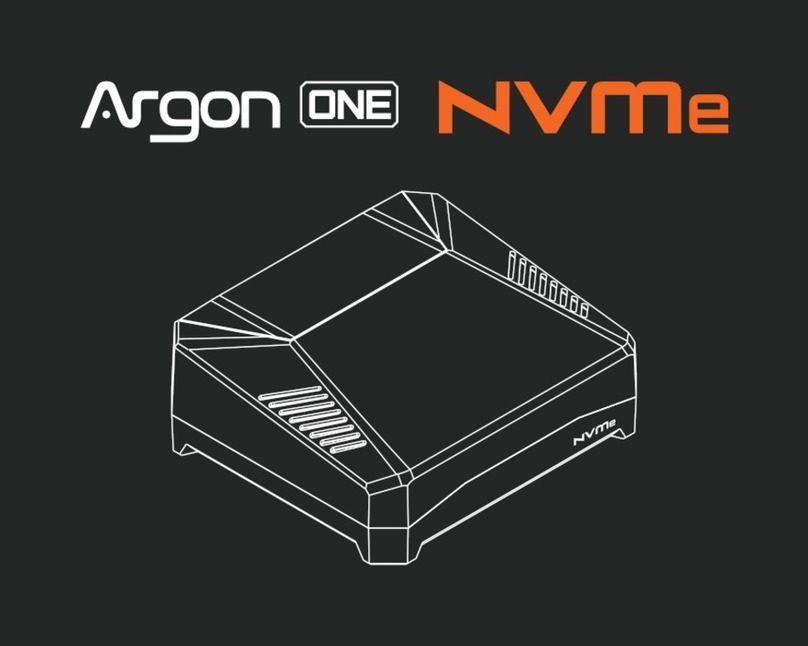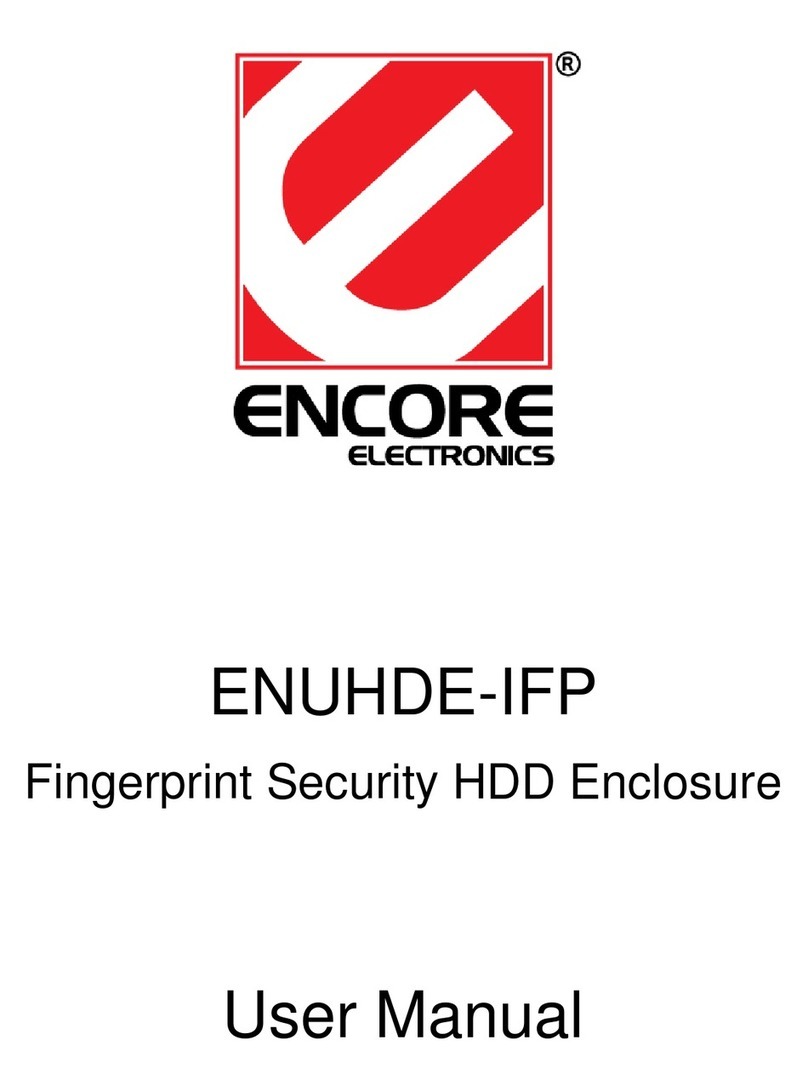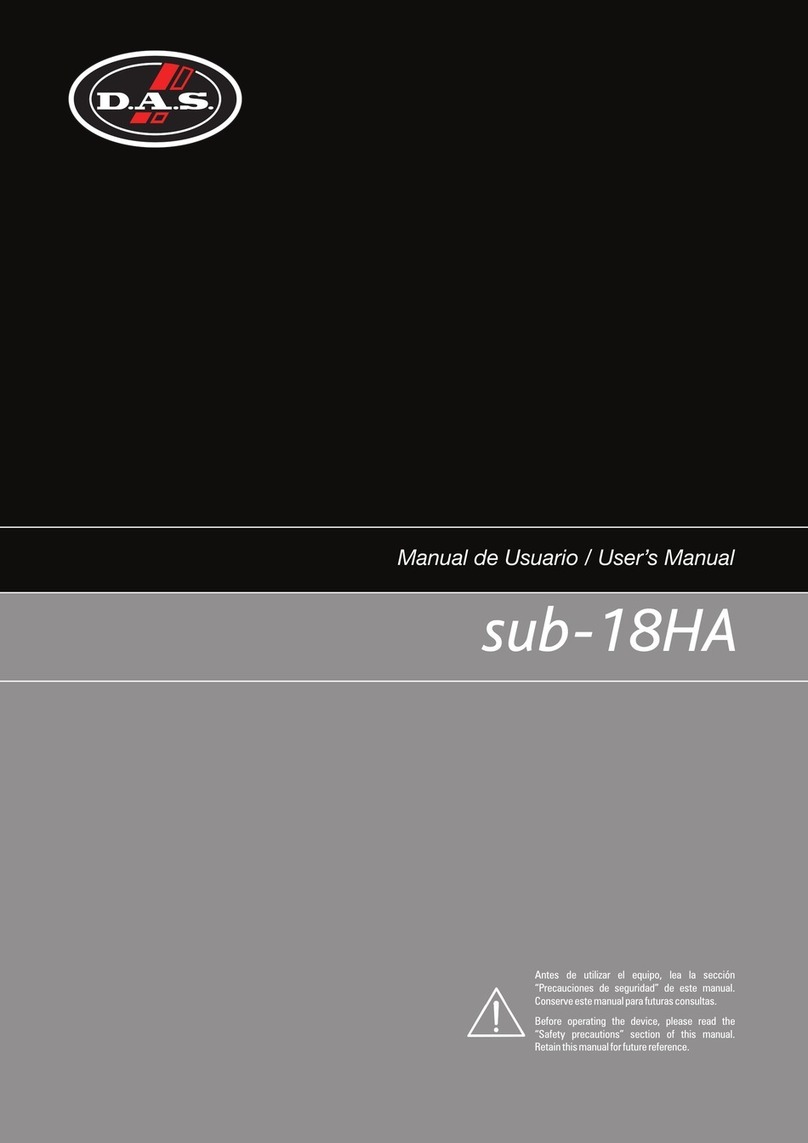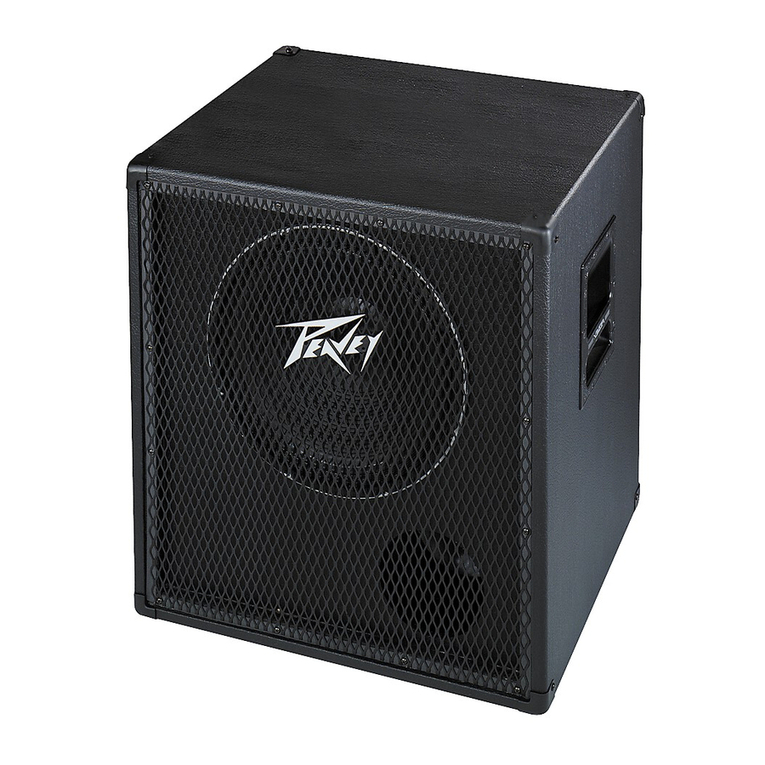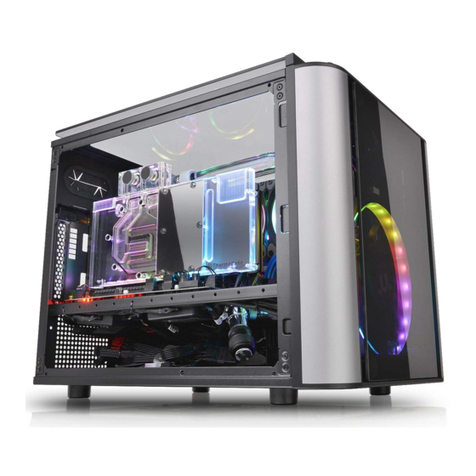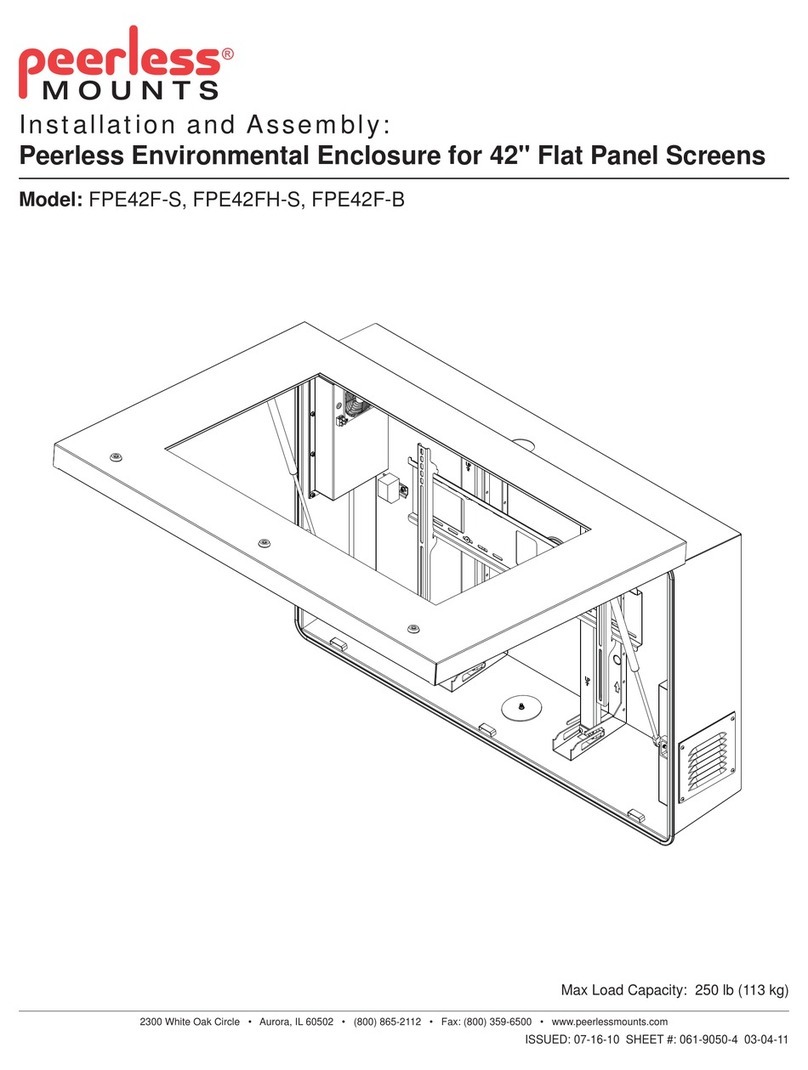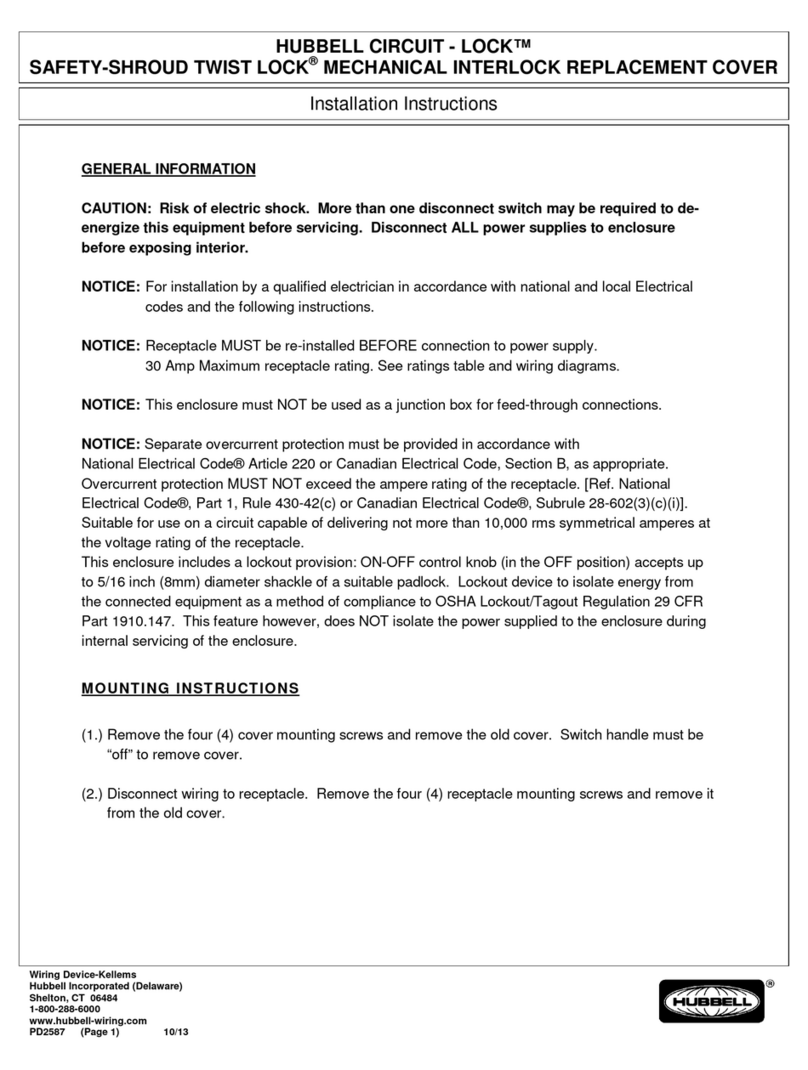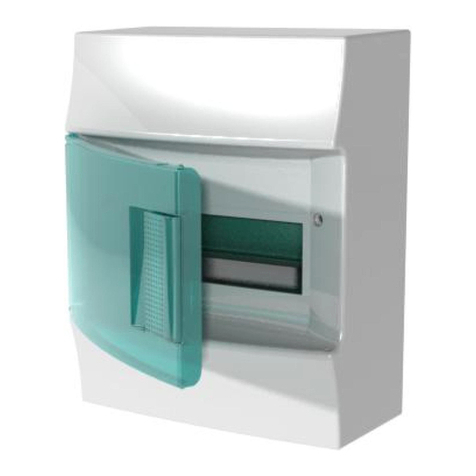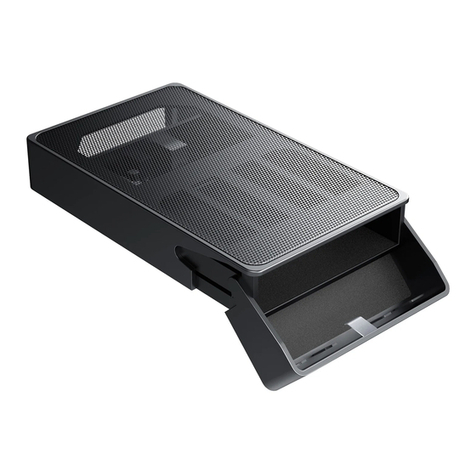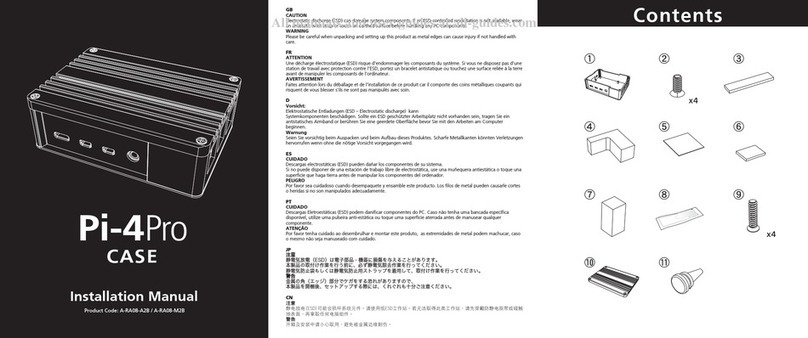Meerstetter Engineering LTR-1200 User manual

User Manual LTR-1200 5171D Meerstetter Engineering GmbH 2
Index
1Device Overview ........................................................................................................ 4
2Safety Information ...................................................................................................... 5
2.1 Safety Instructions...................................................................................................... 5
2.2 Intended Use.............................................................................................................. 5
2.3 User Groups............................................................................................................... 5
2.4 Disposal of Device...................................................................................................... 5
2.5 Output Limitation........................................................................................................ 6
3Functional Description................................................................................................ 7
3.1 Device-specific Documentation................................................................................... 7
3.2 Getting Started........................................................................................................... 7
3.3 Menu Structure........................................................................................................... 9
3.4 Communication Interfaces.........................................................................................11
4Technical Data ..........................................................................................................13
4.1 Elements and Configurations.....................................................................................13
4.2 Front Panel................................................................................................................13
4.3 Back Panel................................................................................................................18
4.4 Error Numbers...........................................................................................................20
4.5 Physical Dimensions .................................................................................................22
4.6 License Notice...........................................................................................................22
AChange History..........................................................................................................23

User Manual LTR-1200 5171D Meerstetter Engineering GmbH 3
Meerstetter Engineering GmbH
Schulhausgasse 12
CH-3113 Rubigen
Switzerland
Phone: +41 31 529 21 00
Email: contact@meerstetter.ch
Meerstetter Engineering GmbH (ME) reserves the right to make changes without further notice
to the product described herein. Information furnished by ME is believed to be accurate and
reliable. However typical parameters can vary depending on the application and actual perfor-
mance may vary over time. All operating parameters must be validated by the customer under
actual application conditions.
Document 5171 D
Release date: 21 February 2023

User Manual LTR-1200 5171D Meerstetter Engineering GmbH 4
1 Device Overview
LTR-1200
Features
Description:
The LDD/ TEC 19" rackenclosure LTR-1200
is a highly configurable, ready-made carrier
system facilitating the integration of up to 4
devices belonging to either the LDD-Family
of laser diode drivers or the TEC-Family of
Peltier/TEC controllers. The system caters
for power, cooling and communication.The
combination of built-in devices (models,
number) is freely selectable by the customer,
their application will dictate the choice (12V
or 24V) and number of internal primary DC
power supplies. Meerstetter Engineering will
take care of the integration and provide a
fully configured turnkey solution.
Up to 4 fans drag air sidewise through the
rack enclosure. Their speed is managed by
intelligent fan control on a dedicated PCB
such that air-cooling becomes effective upon
prolonged use at high ratings. For table-top
operation, the rack mounting brackets can be
removed.
The status of the rack enclosure and of the
built-in devices are indicated on thefront side
display (2x40 characters) and by dual color
LEDs. The most important settings (parame-
ters of the built-in devices and of the front
side data interfaces) can be adjusted over
the 5-way navigation switch.
For advanced operation and configuration,
all internal devices can be addressed over
one of the interfaces; therefore, the originally
supplied TEC and/or LDD Service Software’s
can be used. For continuous monitoring and
control by customers' systems, the serial
communication protocol 'MeCom' can be
used: on one hand, it allows direct control of
the each built-in LDD and TEC device, on the
other hand it allows polling further infor-
mation about the overall system status.For
fast signals (such as LDD pulse triggering)
three digital input lines are available. Also,
one digital output is available (e.g. for error
indication).The integration of third-party
hardware (such as fiber-coupled diode la-
sers) is possible if dimensional requirements
are met.
•Rack Enclosure Size: 1U, 400 mm in depth
•AC Input Voltage: 90–264 V / 47–63 Hz
•Space for Devices: Up to 4 LDD / TEC
Drivers; Third-Party
Devices (Max 8 Outputs)
•Data Interfaces: Ethernet 10/100 MBit/s
USB
RS485
RS232
•Digital I/O Signals: 3 Digital Inputs
1 Digital Output
•Human Machine
Interface (HMI): Backlit 2x40 Character
Display and 5-Way
Navigation Switch for
Local Monitoring and
some Main Settings
•Status Indication: 2 LED (Dual Color)
•Forced Air Cooling: Temperature-Dependent
Fan Speeds
•Max Ambient
Temperature: Full load up to 40 °C
Half load up to 45 °C
•Humidity: 5–95% non-condensing
•IP Code
(per IEC 60529): 20
Advanced Operation
•Remote Control: LDD / TEC Service
Software and
'MeCom' Protocol
Applications
•Optics (Laser Diodes, Crystals, …):
e.g. autonomous turn-key solutions for
comprehensive control (supply, cooling) of
ps lasers
•Electronics (Detectors, RF References, …):
e.g. low-noise camera cooling
•Instrumentation (Microscopy, Materials, Bio-
chemistry, …):
e.g. precision multi-temperature control (ther-
mal zones)

User Manual LTR-1200 5171D Meerstetter Engineering GmbH 5
2 Safety Information
The following parts of the user manual for the LTR-1200 rack (“device”) from Meerstetter Engineering
GmbH (“manufacturer”) contain important information for the owner and person operating the device
(“user”).
2.1 Safety Instructions
To ensure that the device stays in that state and a safe operation is guaranteed, the user must
read and follow safety instructions as well as usage instructions.
Opening and modifying the device is not permitted. For modifications and adaptions, the user
must contact the manufacturer.
The device must be stored in a dry place at room temperature.
In the following cases the user must put the device out of operation and further usage is no
more permitted. For repair measures the manufacturer must be contacted.
•External damage of the casing
•Damage of any connectors
•Loose parts inside the device
•Non-operable device
•Long-time storage in non-optimal conditions (e.g. outdoors or in humid environ-
ments)
2.2 Intended Use
The device is—depending on the configuration—solely intended as driver for Peltier elements
or laser diodes.
•Claims against the manufacturer cannot be made for damages caused by inappropriate
use of the device.
•The user is responsible for any damages resultingfrom inappropriate use of the device.
The user must observe limits specified in the section technical data for a safe use of the device.
2.3 User Groups
Inappropriate use of the device can lead to damage to persons and to material damage
Requirements on the users:
•Only persons having enough know-how or persons especially instructed are allowed to
use the device.
•Users of the device are responsible for their own safety and for the safety of all other
persons in proximity of the operated device.
•Users are responsible that all necessary security precautions are taken, especially
when lasers are operated with the device.
2.4 Disposal of Device
Electrical devices must be disposed and recycled correctly after the end of usage. The user
must return the device to the dealer, importer, or manufacturer or to a recycling company.

User Manual LTR-1200 5171D Meerstetter Engineering GmbH 6
2.5 Output Limitation
TEC controllers and laser diode drivers are—depending on the configuration of the LTR-
1200—limited in output power if necessary, such that overloading of the internal power sup-
plies is prevented.
The controllers themselves feature a built-in temperature monitoring function, which disables
the output when the temperature of the controller gets too high.

User Manual LTR-1200 5171D Meerstetter Engineering GmbH 7
3 Functional Description
3.1 Device-specific Documentation
The following devices can be installed into the LTR-1200. Some of these devices can be con-
nected in parallel to achieve higher output currents. Please contact Meerstetter Engineering if
you have requirements which currently are not covered by any of these devices.
LDD-Family (Laser Diode Drivers)
TEC-Family
(Thermo Electric Cooling Controllers)
•LDD-1121
•LDD-1124
•LDD-1125
•TEC-1089
•TEC-1090
•TEC-1122
•TEC-1123
The functional description and the technical dataof these devices are documented intheir own
specific Datasheets and User Manuals.
3.2 Getting Started
The following symbols are used to categorize the steps of the guide:
Actions to be performed by the user
Reactions from the soft- or hardware, as indication that an action was successful
Additional background information to the step to be performed
Step
Action
Information/ Feedback
1
Hardware Setup
1.1
Connect the LTR-1200 to the mains power and
switch it on.
The display shows the
start screen
1.2
Wait until the LTR-1200 has finished startup.
The display now shows
the main screen
No error is indicated
(both LEDs are green)
1.3
Use the navigation switches to browse through
the Menu. The Menu structure is documented in
chapter 3.3 Menu Structure
1.4
Connect to an internal device (chooose one of
the two options below):
For more information
about how to connect
please refer to 3.4 Com-
munication Interfaces)
1.4.1
Ethernet (preferred)
Remote Control over big
distances.
Simultaneous connec-
tions (multiple applica-
tions) to several devices
are possible.

User Manual LTR-1200 5171D Meerstetter Engineering GmbH 8
Simultaneous connec-
tions (multiple PCs) to
one device are possible.
1.4.1.1
Set up the IP configuration (See chapter 3.4.2
Connecting LTR-1200 over Ethernet)
1.4.1.2
Connect the Ethernet cable.
1.4.2
USB
Easy on-site connec-
tion.
Only one device at the
same time.
1.4.2.1
Connect the USB Cable.
2
Software
Connect the corresponding (TEC or LDD) Ser-
vice Software to a device
(Notice that you estab-
lish a connection to a
device. “Device” and
“Terminal” have differ-
ent meanings. See
chapter 3.4.1 LTR-1200
Communication)
Set up the Service Software connection in the
Maintenance Tab (See chapter 3.1 Device-spe-
cific Documentation)
When the Software is
successfully connected,
it will show a green sta-
tus “Connected” and the
Monitor tab will be up-
dated periodically.
If you connect over
Ethernet and wish to
connect to multiple de-
vices, repeat this proce-
dure for all devices to
connect.
Now the device(s) are
connected. The device
configuration and the
various setting options
are described in the de-
vice-specific User Man-
uals. (See chapter 3.1
Device-specific Docu-
mentation)

User Manual LTR-1200 5171D Meerstetter Engineering GmbH 9
3.3 Menu Structure
The Menu is created dynamically depending on the installed devices. Only the Terminals to
which a device is connected are shown in the Menu. Each Terminal has its own Menu entry
where the most important settings of this Terminal can be adjusted. There is also a small over-
view for each Terminal.
Because there are so many parameters for each Terminal there is only a small selection of
parameters available through the display menu.
Below there is an example of the Menu structure with a TEC controller connected to Terminal
1 and an LDD connected to Terminal 2.
Overview
T# 5-8
Manufacturer
Overview
LTR Settings &
IP Address
Type and S/N
T# 1-4
Device Status
IP Gateway
IP Network Mask
...
FANC Settings &
Device Status
T# 1 Detailed
T# 1 Settings &
Object Temperature
Device Overview
Device Status
Sink Temperature
Actual Output Current
...
T# 2 Detailed
T# 2 Settings &
Laser Diode I Act
Device Overview
Device Status
Laser Diode U Act.
Laser Diode Temp.
...
T# 3-8
T# 3-8 Settings &
...
Device Overview
Device Status
Legend:
T# -> Terminal
Status / Information
Settings
To navigate through the menu use the 5-way navigation switch.
Settings marked with [-/R] have read only permissions.
Settings marked with [R/W] can be modified through the menu. Simply press the OK Button to
switch to the editing mode. Use left and right to switch between the digit positions. Use up and
down to change the digit’s value. Press OK to confirm the setting change.
Errors are shown on the overview screen with a symbol. For a description of the different
Symbols see 4.2.1 LCD. A detailed Error Report will be shown on the device specific Menu
screen.

User Manual LTR-1200 5171D Meerstetter Engineering GmbH 10
3.3.1 Available Device Parameter
Additional Parameters are available on request. Please contact Meerstetter Engineering for an
inquiry
3.3.1.1 LTR-1200
•IPv4 Address
•Gateway IPv4 Address
•IPv4 Network Mask
•Service Software Default Device
•Interface RS232 Baud Rate
•Interface RS485 Baud Rate
•HMI Device Address
•Internal Maximal Temperature
•Internal Maximal Fan-Speed
3.3.1.2 LDD
•Laser Diode Current Actual
•Laser Diode Voltage Actual
•Laser Diode Temperature
•Laser Power Actual
•Laser Diode Driver Enable
•Laser Diode Current CW
•Laser Diode Power CW
3.3.1.3 TEC
•Object Temperature
•Sink Temperature
•Actual Output Current
•Actual Output Voltage
•Output Stage Enable
•Target Object Temp

User Manual LTR-1200 5171D Meerstetter Engineering GmbH 11
3.4 Communication Interfaces
3.4.1 LTR-1200 Communication Concept
The LTR-1200 is equipped with several communication interfaces, which can be used simul-
taneously.
Every communication interface has its own receiving buffer.
The router will process every received message. The message is forwarded to the desired
device. As soon as the router task has received the responding message from the device, the
message is forwarded to the corresponding interface.
Every communication interface has the same priority. All messages are processed succes-
sively.
A connection is always between one control software and one device. The Terminal, device
number and Channel are not directly associated.
Terminal represents only the output on the backplane of the LTR-1200. One device can be
connected to more than one Terminal.
Channel represents the output channel of one device (e.g., CH1 or CH2 in the case of TEC
controllers.)
Please consult the “LTR-1200 Configuration Sheet” (which was supplied with the LTR-1200)
to find out which device channel is connected to which Terminal.
3.4.2 Maximum Cable Length for RS232, RS485 and I/O
For proper functioning, the maximum cable length for RS232, RS485 and I/O connections is
3.00 m.
Interface
Buffer
RS485
Interface
RS232
Interface
USB
Interface
Ethernet
Interface
Interface
Buffer
Interface
Buffer
Interface
Buffer
Router
TEC-1089
LDD-1121
TEC-1122
LDD-1125
HMI
FANC
LTR Internal
BUS
Virtual Connection

User Manual LTR-1200 5171D Meerstetter Engineering GmbH 12
3.4.3 Connecting LTR-1200 over Ethernet
The LTR-1200 does not support DHCP. A fixed IP Address configuration must be set over the
display menu. Please set the following settings:
•IP Address
•Gateway Address (required for routing)
•Network Mask
Please try to access to the built-in LTR-1200 web server by entering the previously configured
IP Address to your web browser.
3.4.3.1 Ethernet Connection
Please refer to 3.1 Device-specific Documentation to connect the Service Software over Ether-
net. The Device Address (Device to be addressed) can be found on the LTR-1200 Menu or on
the Built-in web site. It usually is the same as the Terminal Number. The LTR-1200 provides a
total of six connections (TCP/IP, Port 50000, Timeout: 10s) to control the LDD/TEC Drivers
over Ethernet. For Third Party Software communication please refer to the MeCom communi-
cation protocol specifications (See chapter 3.1 Device-specific Documentation).
3.4.4 Service Software Default Address
In some cases, it may be helpful to configure a default LDD/TED driver as standard device.
This can be done by setting the 'Service Software Default Device' parameter to a specific
LDD/TEC Device Address in the Displaymenu. In this case the Device Address 0 will berouted
to the 'Service Software Default Device'.
3.4.5 Access over Third-Party Software
For Third Party Software communication please refer to the MeCom communication protocol
specifications (See chapter 3.1 Device-specific Documentation).
3.4.6 Communication Fault Management
3.4.6.1 For RS485, RS232 and USB Interfaces
A received MeCom-Package with a wrong CRC is not being processed, no error is generated.
If a MeCom-Package is being forwarded to a device (LDD/TEC) and no answer is received
from the device, no error is generated. The sending host must repeat the MeCom-Package.
3.4.6.2 For Ethernet Interface
A received MeCom-Package with a wrong CRC results in closing the corresponding TCP con-
nection. If a MeCom-Package is being forwarded to a device (LDD/TEC) and no answer is
received from the device, the MeCom-Package is being sent to the device two more times. If
still no answer is received, the TCP connection is closed by the LTR-1200.

User Manual LTR-1200 5171D Meerstetter Engineering GmbH 13
4 Technical Data
4.1 Elements and Configurations
Each rack enclosure is equipped and configured to the customer's specifications:
•Up to four LDD-Family orTEC-Family devices can be built in (See 5 Quotation Request
Form).
•The number of required power supplies and fans depends on types, numbers, and
applications of the built-in devices. Meerstetter Engineering equips the LTR-1200 ac-
cordingly.
•The LTR-1200 is back panel configurable, the standard panel offers 4 power output
terminals and 4 sensors inputs connectors. (Up to 8 Terminals are possible)
•It is also possible to install third party devices. Please contact Meerstetter Engineering
with your enquiry.
•Important note concerning the integration of LDD-Family devices into LTR-1200 rack
enclosures: The internal wiring from an LDD device to its back panel terminal can
measure several 10cm and represents an inductive load. Therefore, fast pulsing per-
formance will be impaired.
4.2 Front Panel
4.2.1 LCD
The picture shows the LCD display of an LTR-1200 with 4 devices built-in.
Symbols on the LCD Display
First Symbol
(Next to
TEC/LDD)
Device is 'Ready'
Other
(Reset, Restart,
Bootloader, …)
Device is 'Run-
ning'
Device has an
Error
Second Symbol
(if type is TEC)
Not in Temperature
Control Mode
'Wait'
(not stable, yet)
Stability Reached
-
4.2.2 Navigation
There is a five-point navigation switch available to browse through the Menu. This can be used
to change the most important settings of the internal devices.

User Manual LTR-1200 5171D Meerstetter Engineering GmbH 14
4.2.3 LED
Dual Color Status LEDs
LED
Sources (grouped)
S1 (top)
LTR Components (HMI, Fan Controller)
S2 (bottom)
Built-in Devices (LDDs, TECs)
Grouped status code is prioritized, i.e., if one output stage is running, the grouped LED shows
'Run', if one device has an error, the grouped LED shows 'Error'.
LED Status Description (S1, S2)
Color
Pattern
Signification
Green
Slowly blinking
'Ready' status (no Error)
Green
Blinking fast
'Run' status (no Error)
Red
Static on
'Error' status, output stages disabled
Red
Slowly blinking
Unknown Device Status, but no Error
4.2.4 Digital I/O
4.2.4.1 Pinout
Type
DIG IO
Label
LDD-112x
TEC-
1122/1123
TEC-
1089/1090
LTR-1200
Input 1
IN1 →
RES8
GPIO8
GPIO1
Special Function
available on re-
quest
Input 2
IN2 →
RES7
GPIO7
GPIO2
Input 3
IN3 →
RES6
GPIO6
GPIO3
Output 1
OUT
RES5
GPIO5
GPIO4
GND
⊥
Digital IO Ground
All digital I/Os are ESD-protected and have a series and pull-down resistor.

User Manual LTR-1200 5171D Meerstetter Engineering GmbH 15
4.2.4.2 Characteristics
Symbol
Parameter
Comments
Min
Typ
Max
Units
Digital Isolator Characteristics
fTRANSFER
Transfer Frequency
NRZ (No Return to
Zero)
0
25
MHz
tPHL, tPLH
Propagation Delay
45
60
ns
Input Characteristics (Digital Isolator)
VIH
Logic High Input Threshold
2.31
V
VIL
Logic Low Input Threshold
0.99
V
VIMAX
Max Input Voltage
-0.5
5.5
V
Output Characteristics (Digital Isolator)
VOH
Logic High Output Voltage
Output Current 20uA
3
3.3
V
VOL
Logic Low Output Voltage
Input Current 20uA
0
0.1
V
VOHL
Logic High Output Voltage
(Hi Load)
Output Current 4mA
2.8
3.1
V
VOLL
Logic Low Output Voltage
(Hi Load)
Input Current 4mA
0
0.4
V
ESD Protection (between Digital Isolator and Connector)
VPP
ESD Discharge
IEC61000−4−2
100
kV
RA
Series Resistance
170
200
230
Ω
4.2.5 RS485
4.2.5.1 Pinout
RS485 Label
Half-Duplex Connection
A
A
B
B
Y
Z
⊥
GND

User Manual LTR-1200 5171D Meerstetter Engineering GmbH 16
4.2.5.2 Characteristic
Sym-
bol
Parameter
Comments
Min
Typ
Max
Units
Digital Isolator Characteristics
Speed
Communication Speed (Baud Rate)
Software Setting
4800
1M
bps
VPP
ESD Protection
Human Body Model
+-15
kV
Input Characteristics (Receiver)
VTH
Differential Input Threshold Voltage
-200
-125
-30
mV
VHYS
Input Voltage Hysteresis
15
mV
RIN
Line Input Resistance
96
kΩ
Output Characteristics (Driver)
VOD1
Differential Output Voltage, Loaded
RL = 100Ω (RS422)
2.0
3.6
V
VOD2
Differential Output Voltage, Loaded
RL = 54Ω (RS485)
1.5
3.6
V
4.2.6 RS232
4.2.6.1 Pinout
Pin
Function
2
TxD (Data from LTR)
3
RxD (Data to LTR)
5
Signal Ground (GND)
other
Not Connected
4.2.6.2 Characteristic
Symbol
Parameter
Comments
Min
Typ
Max
Units
Protection Characteristics
VPP
ESD Protection
Human Body Model
+/-15
kV
Electrical Characteristics
Speed
Communication Speed (Baud
Rate)
Software Setting
4800
1M
bps
VOH
High-level Output Voltage
TxD at RL = 3kΩto
GND
5
5.5
V
VOL
Low-level Output voltage
TxD at RL = 3kΩto
GND
-5
-5.4
V
VIT+
Positive Input Threshold Voltage
1.5
2.4
V
VIT-
Negative Input Threshold Vol-
tage
0.6
1.2
V

User Manual LTR-1200 5171D Meerstetter Engineering GmbH 17
4.2.7 USB
The USB interface is electrically isolated. A virtual COM Port is provided for communication
with a host PC. The drivers are the same as the ones already required / installed for the indi-
vidual internal devices. (Used chip: FTDI FT232RQ)
4.2.7.1 Characteristic
Symbol
Parameter
Comments
Min
Typ
Max
Units
Protection Characteristics
VISO
Isolation Voltage
1
-
2.5
kV
VPP
ESD Protection
Human Body Model
+/-15
kV
Electrical Characteristics
Speed
Communication Speed (Baud
Rate)
Software Setting
4800
1M
bps
4.2.8 Ethernet
4.2.8.1 Specifications
The Ethernet meets the following specifications:
•IEEE 802.3 compliance
•100BASE-TX and 10BASE-T compliance
•Auto Negotiation (Automatically switch between 10Mbit/s / 100Mbit/s, Half -/ Full-Du-
plex)
•Auto MDIX (Auto crossover)
•Optional VLAN (available on request)
•Optional IEEE 1588: Precision Time Protocol (available on request)
4.2.8.2 LED Description
Green
Orange
Off
Not connected
10Mbit/s
Blink
Activity
-
On
Connected
100Mbit/s
4.2.8.3 Available Features
•Small embedded website
•Service Software communication
•MeCom protocol

User Manual LTR-1200 5171D Meerstetter Engineering GmbH 18
4.3 Back Panel
Picture of 4 Terminal Version. (Only approx., the sensor connectors are wrong)
Picture of the 8 Terminal Version
By standard, the GND potentials of all built-in TEC and LDD devices are interconnected. Con-
sequently, all external loads and sensors to be attached to the back panel should be potential-
free. At the most, only one single potential (e.g. GND of one laser diode) may be tied to a given
potential; it is however recommended to keep all loads and sensors potential-free.
Upon customer request, individual outputs can be equipped such that they are potential-free
(i.e. independent of other built-in devices). Please contact Meerstetter Engineering with your
enquiry
4.3.1 TEC Sensors Pinout
Fully pre-confectioned cables are available from Meerstetter Engineering at request.
4.3.1.1 Part List
Description
Manufac-
turer
Manufacturer Part Nr.
Connector Solder 7-Way
Binder
99-4925-00-07
Cable 6-Way, Shielded
Kabeltronik
2-LifYCY TP (820600800)
4.3.1.2 Pinout
Function
Pin
Cable Color
Object Voltage Sense +
1
White
Object Voltage Sense -
2
Brown
Object Current Output
3
Green
Object Current Return
4
Yellow
Sink Sense A
5
Grey
Sink Sense B
6
Pink
NC
7
-
Please connect “Current Output” and “Voltage Sense +” together to one side of the thermis-
tor/RTD,
and “Current Return” and “Voltage Sense –“ together to the other side of the thermistor/RTD.

User Manual LTR-1200 5171D Meerstetter Engineering GmbH 19
4.3.2 LDD Sensors Pinout
Fully pre-confectioned cables are available from Meerstetter Engineering at request.
4.3.2.1 Part List
Description
Manufacturer
Manufacturer Part Nr.
Connector Solder 4-Way
Binder
99-4909-00-04
Cable 4-Way, Shielded
Kabeltronik
2-LifYCY TP (820400800)
4.3.2.2 Pinout
Function
Pin
Cable Color
Temperature Sense A
1
White
Temperature Sense B
2
Brown
Photodiode Cathode
3
Green
Photodiode Anode
4
Yellow

User Manual LTR-1200 5171D Meerstetter Engineering GmbH 20
4.3.3 AC Mains Supply
The main power connector is a 3-pol Connector for IEC C13 Cables
Symbol
Parameter
Comments
Min
Typ
Max
Units
Electrical Characteristics
VACnom
Nominal Input Voltage
Single Phase
100
240
V
VAC
Input Voltage
Continuous
90
264
V
VACtrans
Input Transients
60ms
300
V
fAC
Input Frequency
47
50/60
63
Hz
PIN
Input Power*
1 - 4 Power Supplies
400
1600*
W
PIN110
Input Power (110VAC)
1 - 4 Power Supplies
400
1100
W
Protection Characteristics
Fuse
Slow Fuse
Integrated into Con-
nector
10
A
* When operated on 110VAC mains supply, the max input power is derated to 1100W due to
the 10A fuse built into the standard IEC C13 housing. Please contact Meerstetter Engineering
if you require an alternative connector.
4.4 Error Numbers
Error Numbers 1 to 99 are universal error numbers, which are identically on each device. For
all other universal error numbers please refer to the LDD-Family or TEC-Family User Manuals.
Error Numbers 100 and above are HMI (LTR)-specific.
4.4.1 RTOS Errors
#
Code
Description
Error Condition,
Remedy
80
RTOS_STACKOVERFLOW
One task has a stack over-
flow
Please contact Meerstetter
Engineering
81
RTOS_MALLOCFAIL
Cannot allocate memory
Please contact Meerstetter
Engineering
4.4.2 Routing Errors
#
Code
Description
Error Condition,
Remedy
100
ROUTING_LOSTFRAME
The routing task has lost a
frame
Lost frame on internal bus
101
COM_TIMEOUT
Communication timeout to
an internal device occurred
No answer for 3x100 ms
102
ADDRESS_CONFLICT
Two internal devices use
the same address on the
bus
Two identically addresses
detected
This manual suits for next models
7
Table of contents


